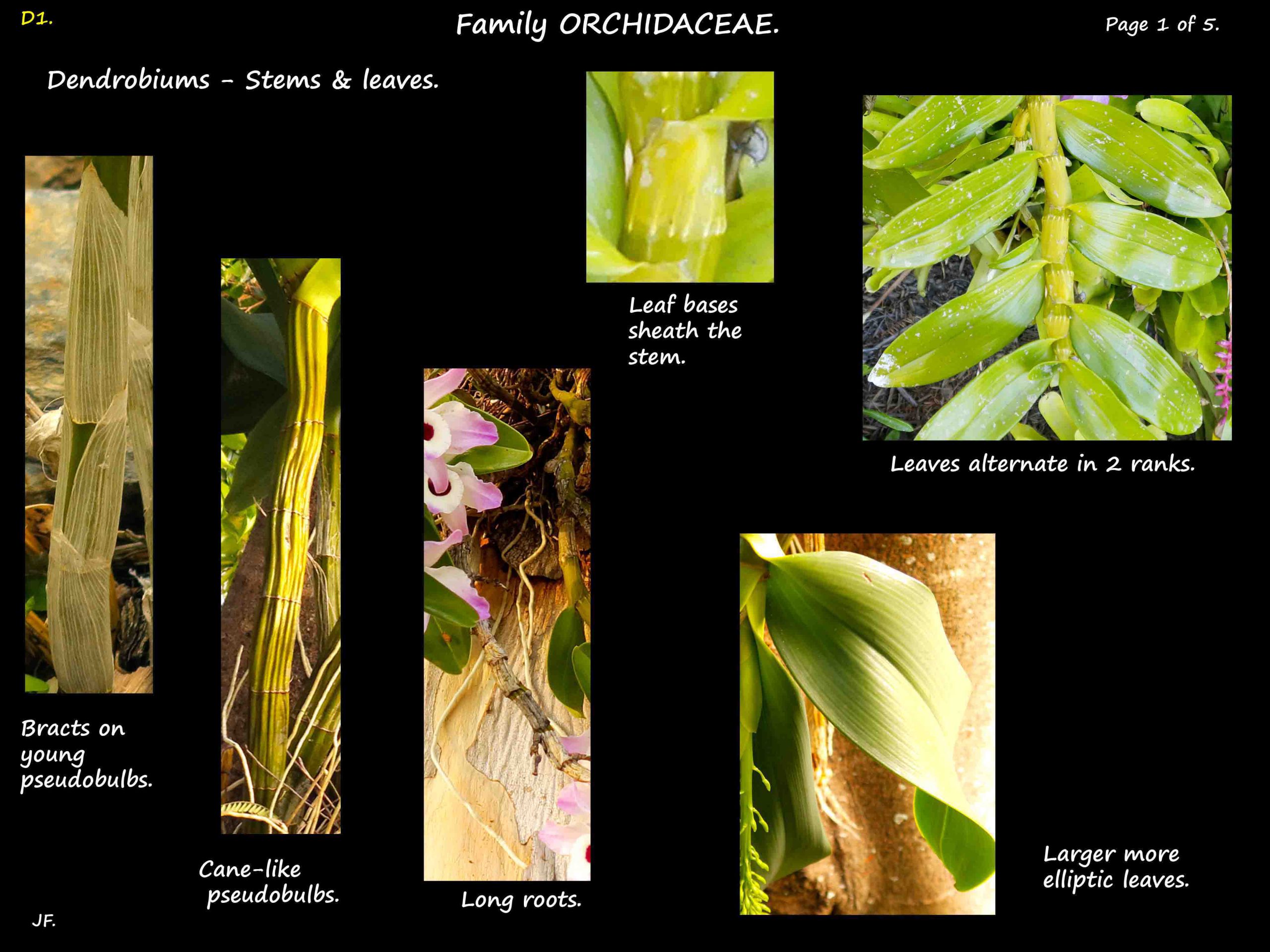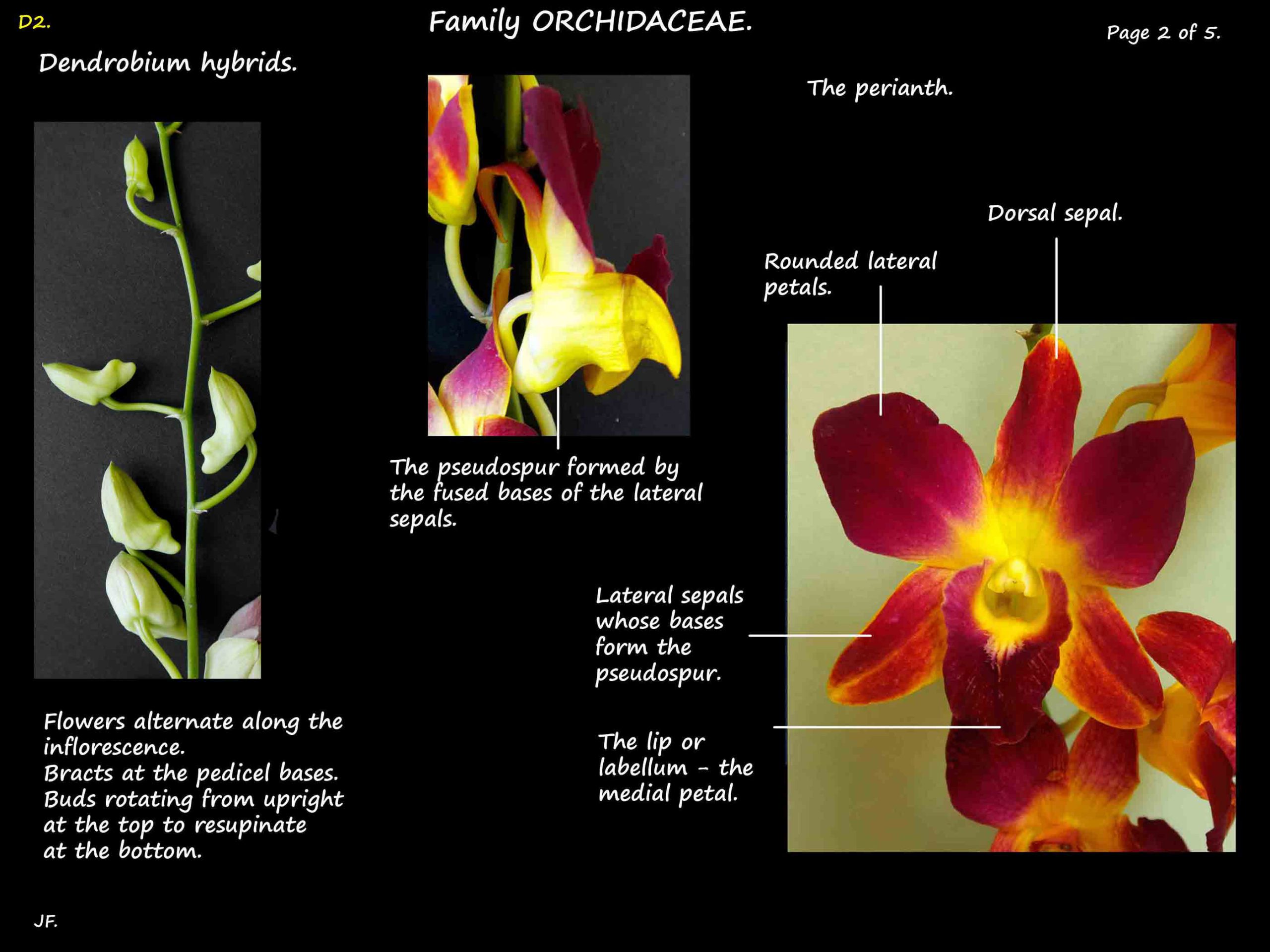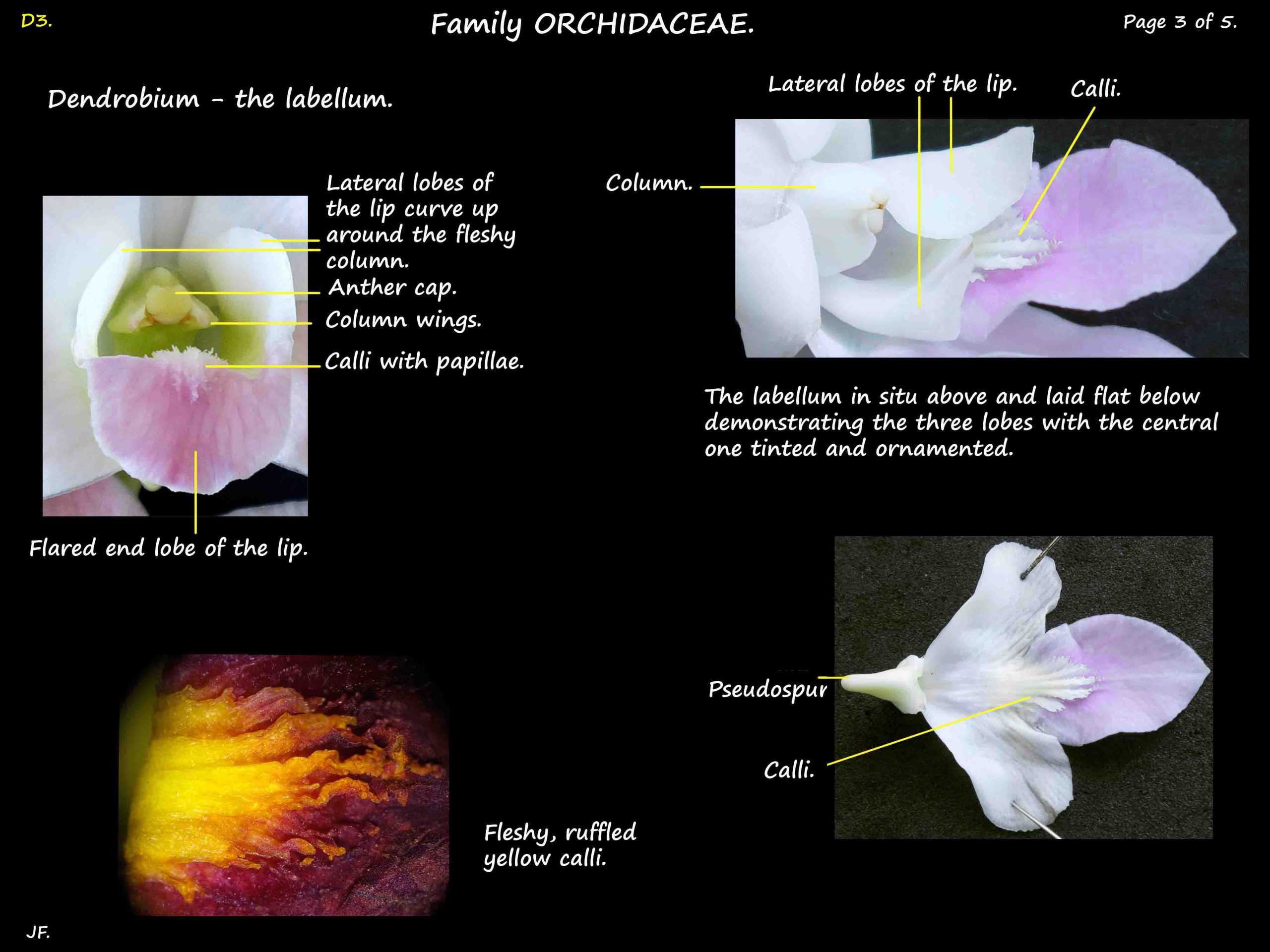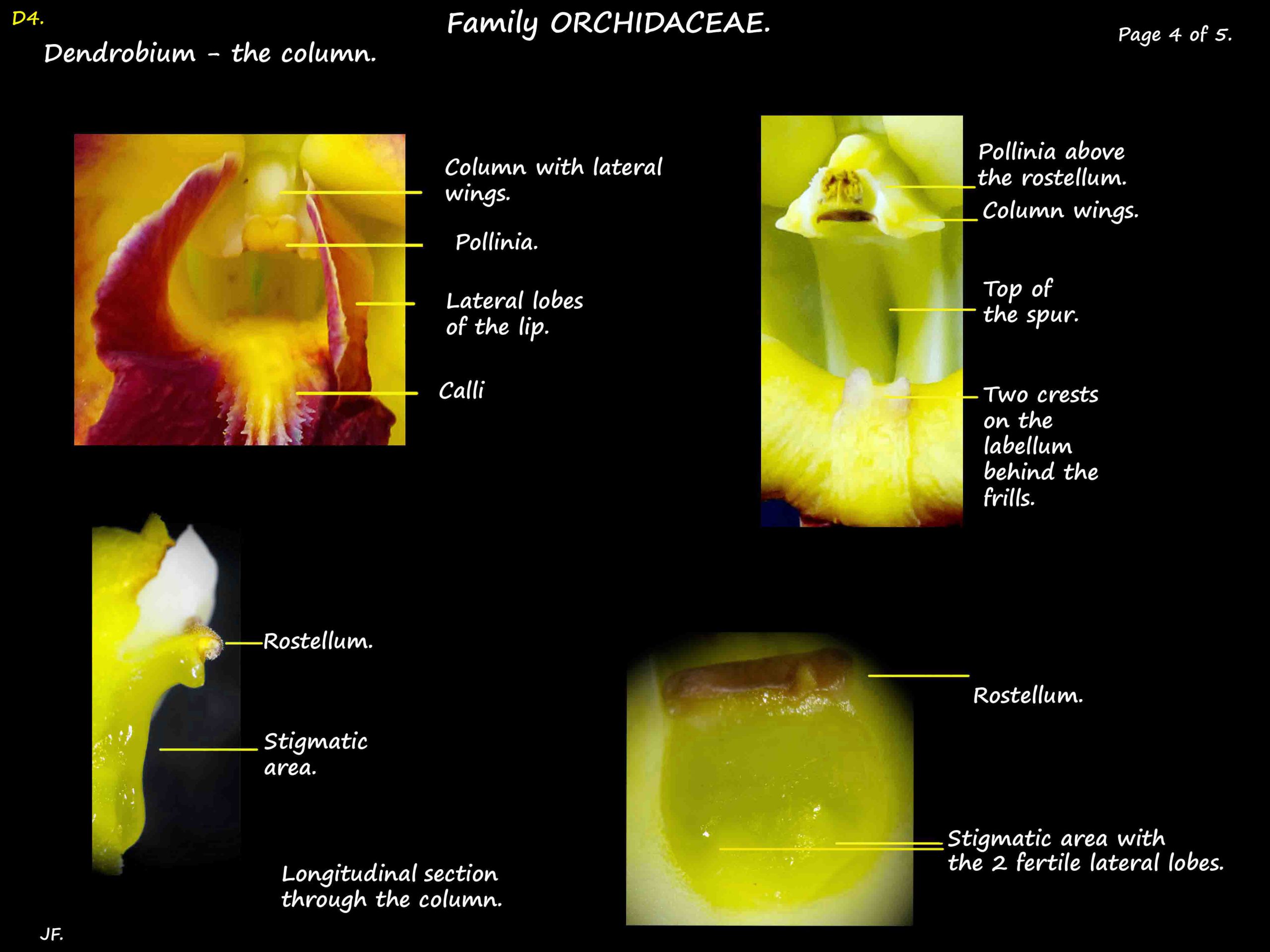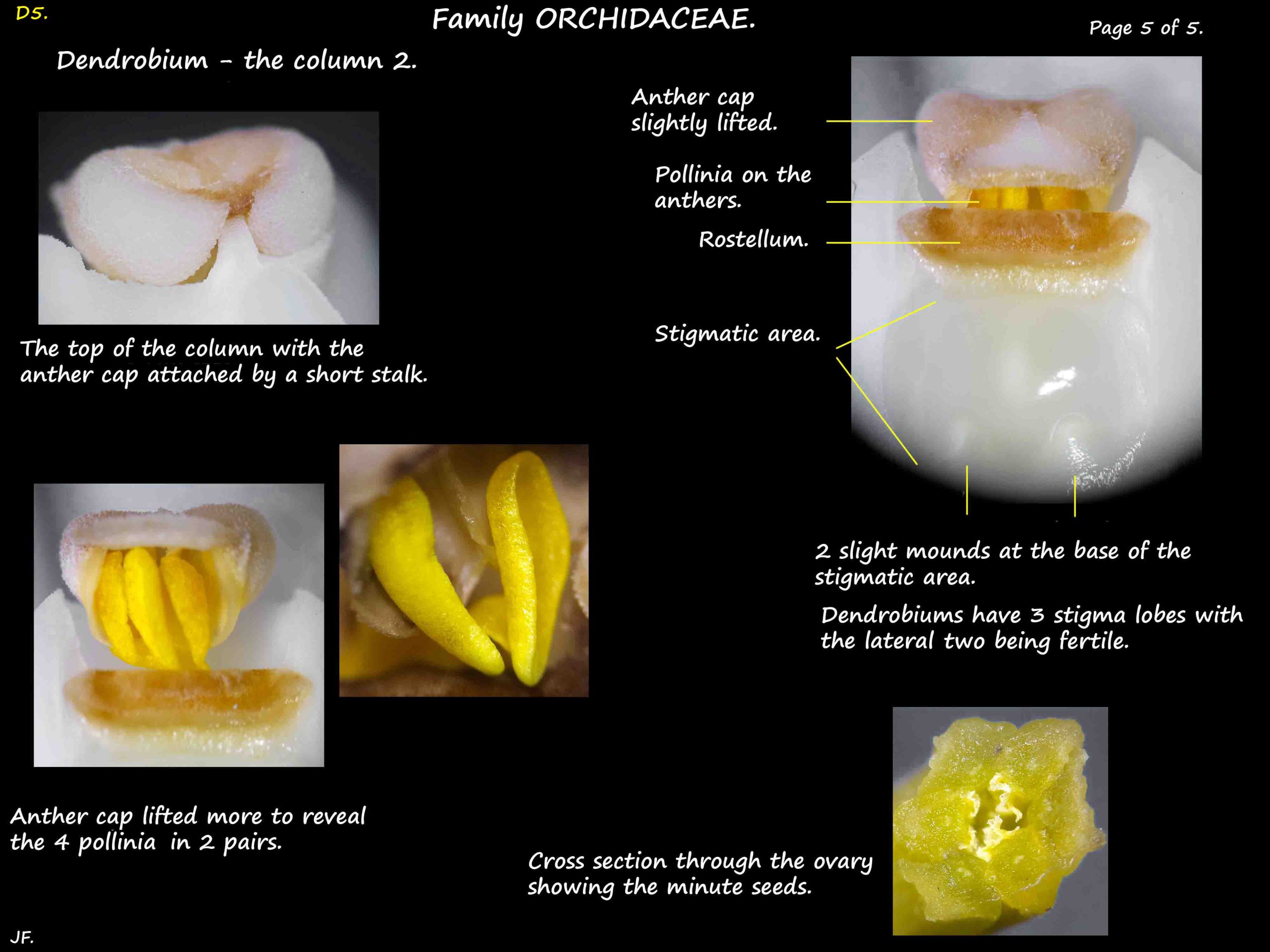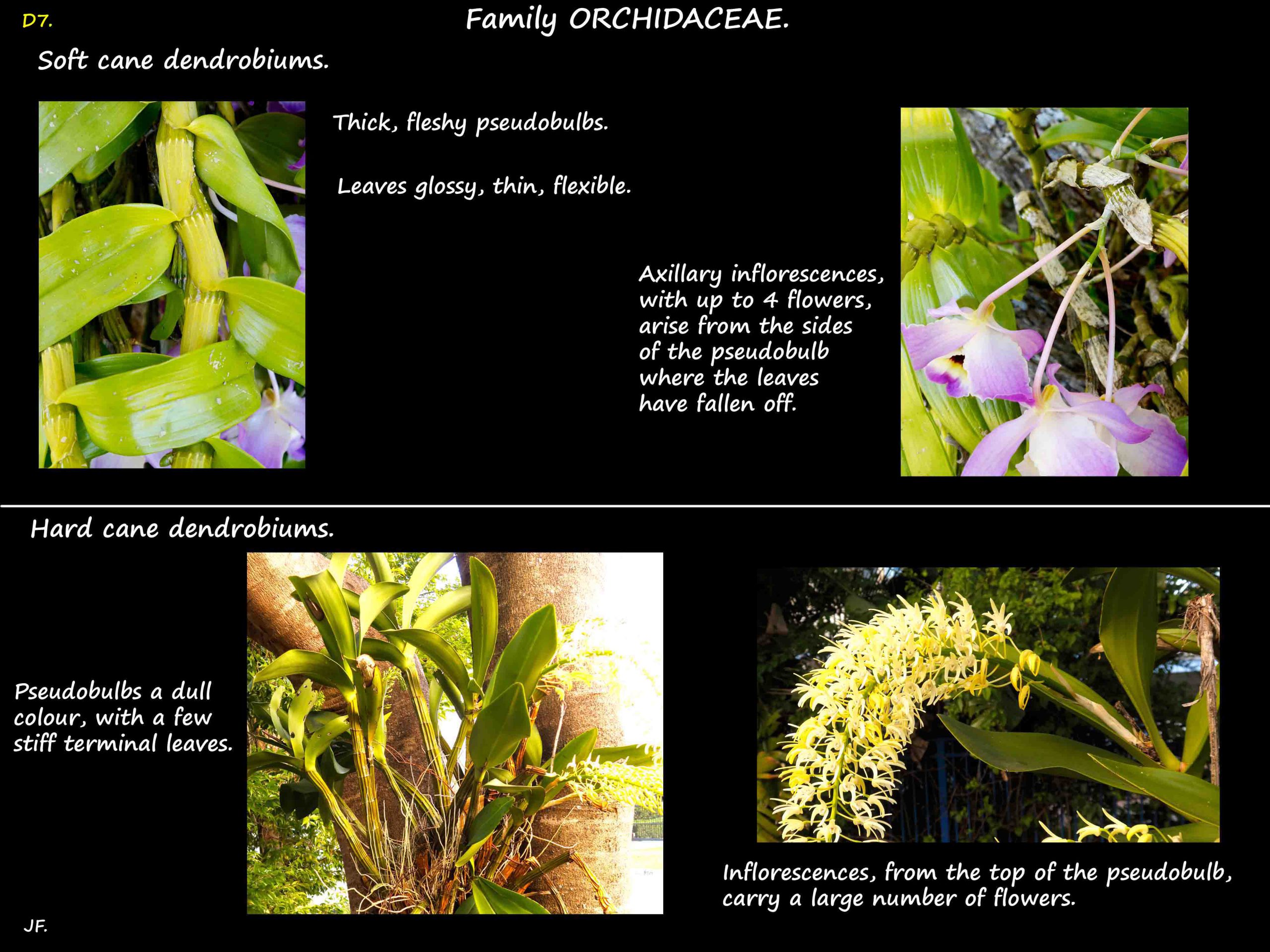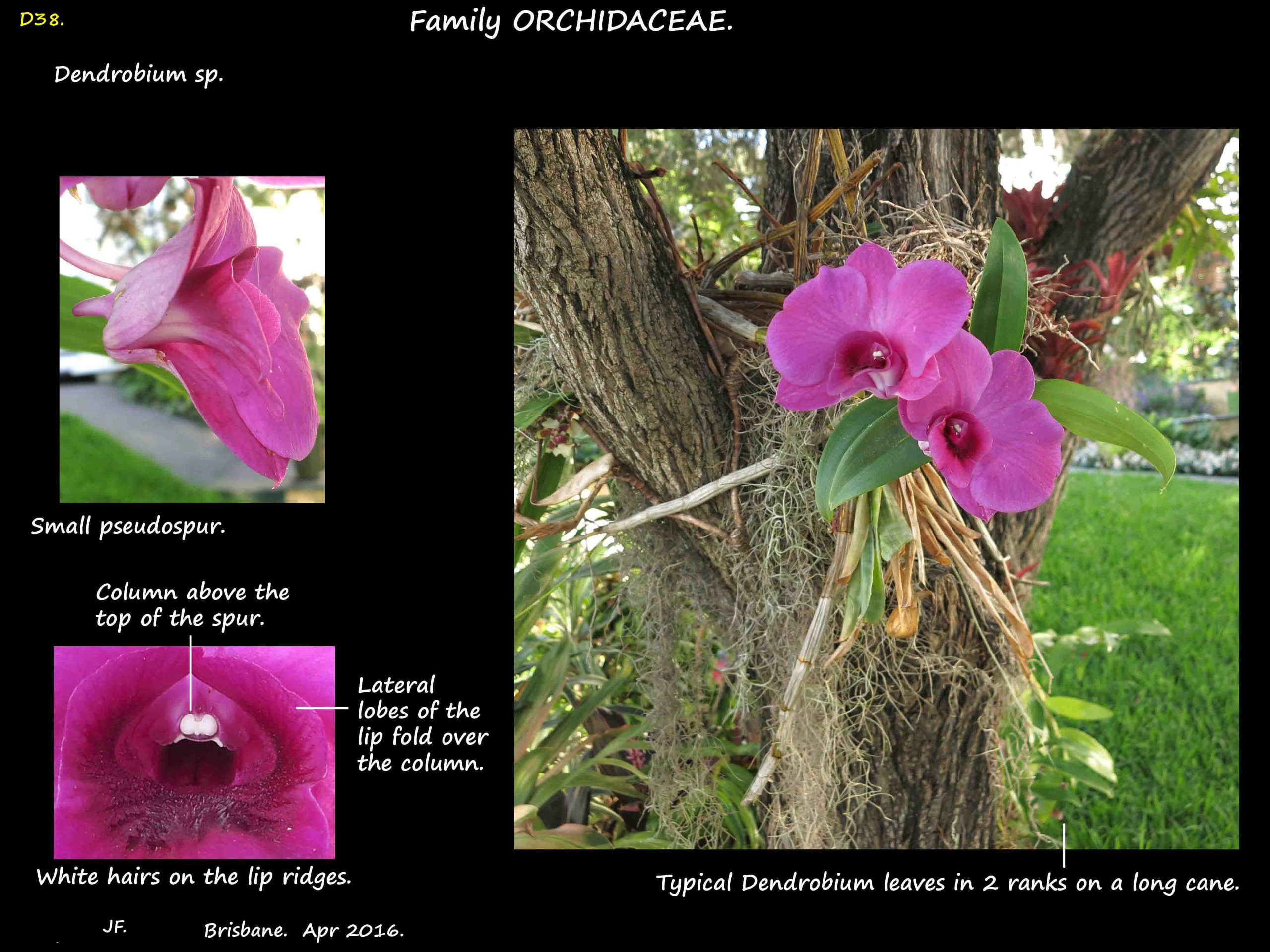Dendrobium orchids.
The Dendrobium genus has more than 1400 species with a widespread distribution.
The genus is commonly divided into groups, sections or types based on various criteria but
there is no consistency between the criteria or groups used.
Occurring in a number of classifications are sections such as Calcarifera, Callista, Dendrobium,
Formosa & Latouria, Pedilonum and Spatulata.
Other sections seen include Aporum, Bolbidium, Brevifloris, Distichophyllae, Gastridium,
Platycaulon, Rhopalanthe, Stachyobium, and Stuposa.
Orchid growers commonly divide them into 2 groups – the soft cane (Nobile) or hard cane
(Phalaenopsis) types with different growing requirements.
Others, such as orchid societies, sometimes devise their own classifications which can be
a combination of sections and appearance e.g. sections Callista, Formosa & Latouria
and Spatulata; then those with black hairs on the stems (Nigrohirsute); plus miniatures;
and the soft and hard cane types which can be further divided into single,
multicoloured or striped varieties.
Generalised description of Dendrobiums.
There is a wide variation in morphology over the genus making it difficult to describe.
There are those who feel it should be broken up into different genera.
Epiphytic orchids growing on trees and sometimes rocks.
They are sympodial orchids with pseudobulbs that have bracts when young.
The branching rhizome has long roots.
Stems range from a centimetre up to cane-like ones metres long.
They are partly or totally deciduous.
Sessile leaves are alternately arranged in 2 ranks along the pseudobulb.
They can be ovate, lanceolate, elliptic but always longer than wide.
They are thin, smooth and flexible.
The leaf bases form a sheath around the stem and there can be more than 1 sheath.
The sheaths, and underside of the leaves, can have short black or white hairs.
Plants have one or more terminal or axillary inflorescences that are erect or pendulous.
Stems often about 20-40 cm but can be more than a metre.
Each can have from 1 up to 100 flowers.
Deciduous species form flowers on bare stems.
Flowers have bracts of various shapes and textures and sometimes with hairs.
There is much variation in flower structure between species.
Size varies from a couple of centimetres up to 8 cm across.
Flowers are resupinate and often with a widely spreading perianth.
There are 3 sepals and the lateral 2 may be fused to the base of the column to form
a pseudospur which can be straight or curved.
The 2 lateral petals are often rounded but can be narrow.
The lip has a tubular base surrounding the column and a flared end.
Its edge can be entire, toothed or frilled and it may or may not have hairs.
It has narrow ridges or calli that can have hairs or papillae.
Flowers come in a large range of often pastel colours – white, pink, red, yellow,
green or shades of purple.
There are often contrasting colours, spots or stripes on the labellum.
The column is short, fleshy and has a long foot and sometimes wings.
The stigma has 3 lobes with the lateral 2 being fertile and the third lobe absent or modified.
The stigma is concave and the rostellum has no viscidium.
The anther is terminal and attached by a strap-like claw.
There are usually 4 waxy yellow pollinia in 2 pairs which can be straight or curved.
The dehiscent capsules are large and drooping and contain many pale winged seeds.
A few reproduce asexually by offshoots along the stem.
Soft and hard cane dendrobiums.
Despite the names the leaves and inflorescences are actually a better way to
distinguish the two types than the canes themselves.
Soft cane types have:
- fleshy, often shiny pseudobulbs (canes), often with many offshoots (keikis),
- nobile types have erect inflorescences and the semi-nobile are pendulous,
- leaves are thin, flexible and shiny and alternate along much of the stem,
- some or all of the previous years leaves fall off in winter,
- very short axillary inflorescences grow from where the leaves were,
- there are only 1-4 flowers on each inflorescence.
The soft cane or Nobile types are characterized by Dendrobium nobile which is classified
in the Dendrobium section and also includes D. gibsonii and D. parishii.
Hard cane types have;
- tall, cane-like pseudobulbs, most without keikis,
- they are evergreen and the leaves are duller and not flexible,
- usually only a few leaves at the top of the canes,
- inflorescences are terminal, long, upright or arching and with many flowers.
Hard cane or Phalaenopsis types are hybrids of the Phalaenanthe and Ceratobium
sections of Dendrobiuims.
Most are hybrids of D. phalaenopsis (now known as D. bigibbum) and are known as
den-phals as the flowers resemble those of Phalaenopis.
Den-phals.
These Phalaenopsis-like dendrobiums are hybrids of a number of Dendrobium species.
They are not a cross between Dendrobium and Phalaenopsis which is genetically impossible.
To add to the confusion the Dendrobium most commonly involved was initially called Dendrobium
phalaenopsis because its flowers closely resemble those of phalaenopsis.
Dendrobium phalaenopsis is now called Dendrobium bigibbum although it is still often seen
under the old name.
The Den-phals have moth-like flowers, on a long stem, and in various sizes and mainly in
shades of white, purple and red.
Looking at the flowers alone it can be difficult or almost impossible to tell them from
phalaenopsis flowers.
The Den-phal flowers have a pseudospur and they are carried on a strong, largely upright stem.
J.F.
